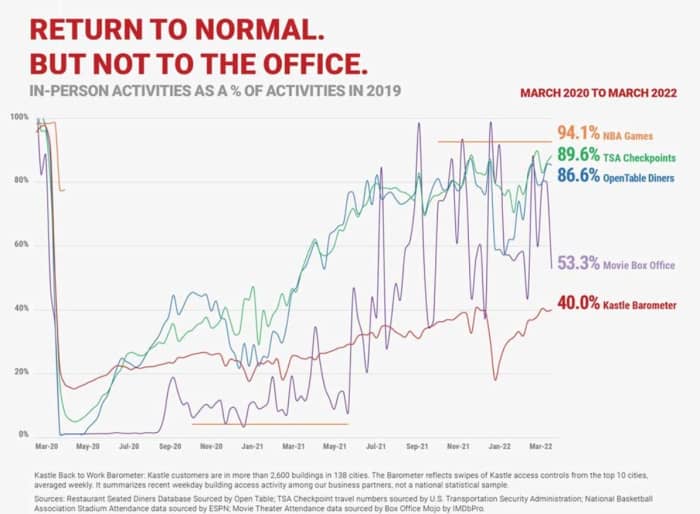This post was originally published on this site
Life in many respects is back to normal, with shops, restaurants, bars all open, mask guidance being phased out and very few restrictions still in place. Even Kyrie Irving can play basketball in Brooklyn again.
Except for one area: offices. According to building security provider Kastle, which has customers in more than 2,600 U.S. buildings in 138 cities, the average weekly occupancy is still just 40%. Though there are regional differences, only the Austin, Texas. metro area is above 50%. San Jose and San Francisco are both mired in the low 30s.
Other parts of daily life are far more normal. Judging by U.S. Transportation Security Administration data, airlines traffic is about 10% below than 2019 levels. Hotel prices also are climbing.

Nicholas Colas, co-founder of DataTrek Resources, said the office occupancy data is consistent with employees having the upper hand in the job market.
“Many businesses want their workers back in the office but know that pushing the issue risks increasing labor force turnover. Many workers want – and can demand – flexible work schedules where they continue to work from home some or all of the time,” said Colas.
Office occupancy is a sign that labor market conditions remain tight, he added. “Just like the JOLTS data, there is an upside: money saved by not commuting leaves more in household budgets to offset rising inflation,” he said.
Data released Tuesday showed the ninth straight month in which more than 4 million U.S. workers quit their jobs.


